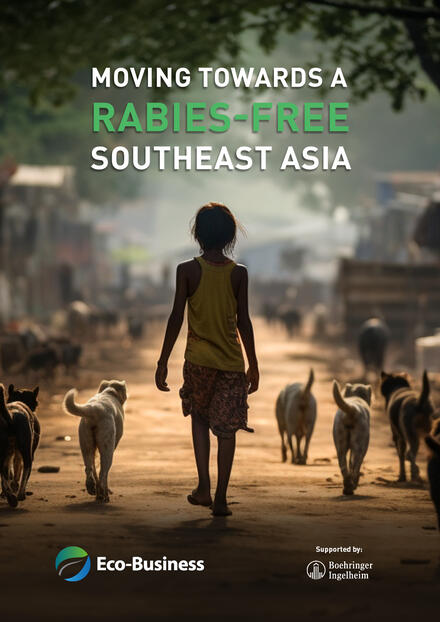Advocating for elimination: Moving towards a rabies-free Southeast Asia
Neglected Tropical Diseases, or NTDs, are a diverse group of diseases and conditions that are mainly prevalent in tropical areas. They put the greatest health, social and economic pressures among people living in underserved communities and are responsible for devastating health, social and economic consequences. This term is used by the World Health Organization, which has prioritized a list of 20 of these diseases to combat in line with the Sustainable Development Goals of the United Nations (SDGs); 8 of the 20 diseases are considered Neglected Zoonotic Diseases with rabies being one of them. But what does this really mean? How can a disease that has international organizations, government ministries, civil society and the private sector working towards its elimination be considered neglected?

Rabies is considered neglected as global and national stakeholders and decision-makers lack awareness about the importance of the disease and have not prioritized it. Global funding agencies like the World Bank and others, typically do not provide funding for rabies elimination efforts, despite a general call for improved health and well-being under the SDGs, and a call for improved Universal Health Coverage and health system strengthening from the global community. This means that rabies remains under-resourced, especially in the areas most affected by the disease. As a result, the problem of rabies persists.
It is for this reason that global awareness campaigns such as End Rabies Now, World Rabies Day (September 28) and other important advocacy channels are so important. The aim is to move dog-mediated rabies from the list of Neglected Zoonotic Diseases to the list of diseases that have been eliminated. To do so, we need to take action, raise awareness, advocate for its prioritization, and work together towards its elimination.
One of the most important means to advocate for rabies prioritization is by highlighting the burden of the disease, and by showing the positive impact of existing interventions – proving that rabies elimination is indeed possible. With a focus on Southeast Asian countries, GARC supported a Boehringer Ingelheim and Eco-Business led initiative to deliver a white paper (an advocacy paper written in plain language to engage stakeholders and interested people) with the latest information on the challenges faced in the region. It also provided key recommendations for effectively preventing rabies, in contribution to support the Zero by 30 Global Strategic Plan, regional targets, and the SDGs.
This white paper, entitled “Moving towards a rabies-free Southeast Asia” focused on 5 countries within the Southeast Asia region, namely Thailand, Vietnam, Philippines, Malaysia, and Indonesia. Experts, key opinion leaders and on-the-ground stakeholders were interviewed to provide an accurate and first-hand account of the situation, the challenges and the solutions needed to eliminate the disease in the region.

Some of the key findings include:
- The noticeable rise of rabies post-COVID-19.
- The spread of rabies to areas that were not previously considered hotspots.
- Southeast Asia’s large population of free-roaming, unvaccinated dogs poses the greatest risk of rabies.
- A lack of awareness of the risks of rabies and how to respond to dog bites, poor access to vaccines in remote areas, the resurgence of the dog meat trade, social perceptions and misconceptions, and border vulnerability to animal movements have contributed to transmission and spread.
While these findings show that more needs to be done, the paper goes on to highlight some of the solutions as to how we, as a united community, can address these challenges. For instance, better cooperation and coordination is needed – especially in terms of planning and driving rabies vaccination campaigns – at all levels from the local to the regional level. Improved disease awareness and education was also highlighted as an essential means to address many of the challenges. Considering that almost half of all human rabies victims are children, educating children remains particularly important. Lastly, the need for improved surveillance is critical to achieve success. We know that without surveillance, it is impossible to provide the evidence to advocate for disease elimination and to drive strategic and effective interventions.
With focus on dog vaccination, education and rabies monitoring, Boehringer Ingelheim’s STOP Rabies team in Southeast Asia, supported with the GARC surveillance tools and education materials, vaccinated more than 23,000 dogs and conducted rabies prevention educational campaigns across the target countries in 2023.
While the white paper focused on the Southeast Asian region, many of the findings and solutions are applicable to other rabies-endemic countries. Success stories in various parts of Southeast Asia have demonstrated that fully sustainable, partnership-driven and community-led initiatives are effective in rabies prevention. Now is timely to stop ignoring a disease that so often affects the underserved groups and to prioritize these experiences with more communities to advance rabies prevention and the goal of eliminating dog-mediated rabies.
Article contributed by: Dr Terence Scott (GARC) and Dr Tan Do Yew (Boehringer Ingelheim).